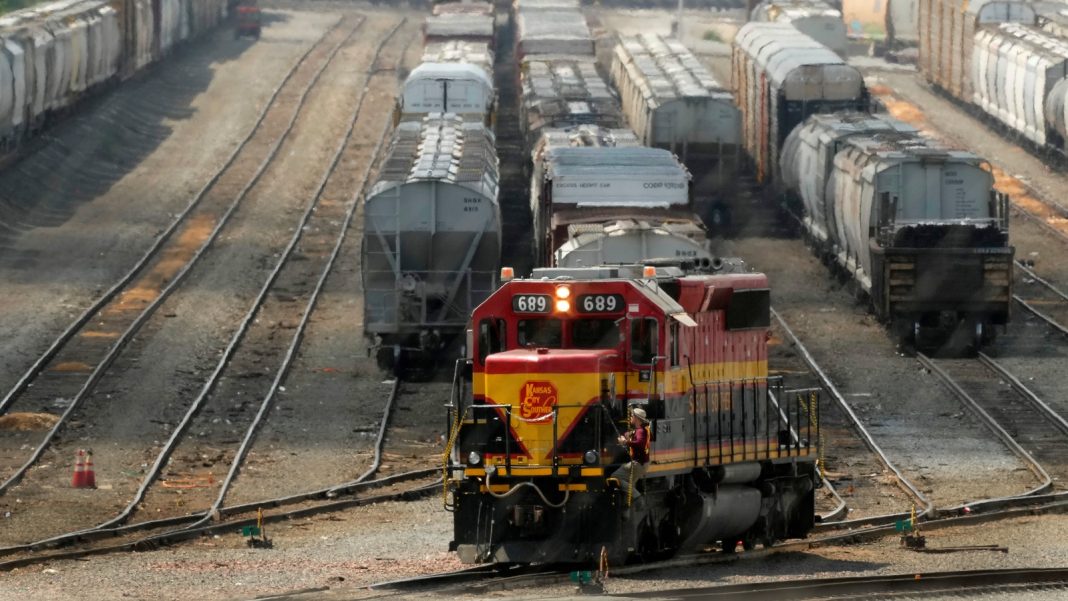Title: Canadian Freight Railroads at a Standstill: Implications for Businesses and Commuters
Introduction:
Both of Canada’s major freight railroads, Canadian National (CN) and CPKC, have halted operations due to a contract dispute with their workers. This has raised concerns among businesses and commuters alike, as the halt in rail service could have far-reaching consequences.
The Contract Dispute:
The contract dispute between CN, CPKC, and the Teamsters Canada Rail Conference, representing 10,000 engineers, conductors, and dispatchers, has resulted in a lockout of employees. Both railroads made final offers that were ultimately rejected by the union, leading to the current impasse. While the railroads have proposed binding arbitration as a resolution, Prime Minister Justin Trudeau has refrained from intervening at this point.
Impact on Businesses:
The cessation of rail service has significant implications for businesses across various industries, as many rely on rail transportation to deliver their raw materials and finished products. Without regular rail service, these companies may be forced to reduce operations or even close down. The U.S. government’s intervention in a similar situation two years ago highlights the economic importance of uninterrupted rail service.
Commute Disruptions:
More than 30,000 commuters in Vancouver, Toronto, and Montreal will be affected by the halt in rail service. CPKC’s tracks are crucial for commuter trains in these cities, leaving commuters scrambling for alternative transportation options. The disruption to daily commutes underscores the urgency for a resolution to the contract dispute.
Government Involvement:
Prime Minister Trudeau has urged both sides to reach a deal due to the potential economic damage that a full rail shutdown could cause. While he has refrained from forcing arbitration, Labor Minister Steven MacKinnon has been involved in negotiations with both railroads and the union. The government’s close monitoring of the situation demonstrates its recognition of the severe consequences a prolonged rail stoppage could have on the Canadian economy.
Comparison with U.S. Rail Industry:
The U.S. rail industry has taken steps to address worker concerns, including negotiating contracts that provide better benefits and paid sick time. Rail workers in the U.S. came close to striking two years ago but were ultimately compelled to accept a deal. The contrast between the U.S. and Canadian approaches highlights the importance of finding a resolution that addresses worker concerns while minimizing economic disruptions.
Business and Economic Implications:
The halting of rail traffic in Canada and across the U.S. border will have a significant impact on businesses. Manufacturing companies may need to scale back or shut down production, and ports and grain elevators will face congestion as shipments accumulate. Water treatment plants across Canada may also experience difficulties due to delayed chlorine shipments. The potential economic consequences of a prolonged rail stoppage are substantial.
Alternative Transportation Options:
While some companies may turn to trucking to maintain their supply chains, the volume of goods that can be transported by trucks cannot match that of railroads. Even if hundreds of trucks are deployed, they would struggle to replace the capacity of a single train. The limitations of alternative transportation options further emphasize the urgency of resolving the contract dispute.
Conclusion:
The contract dispute between CN, CPKC, and their workers has resulted in a complete halt of freight rail operations in Canada. The implications for businesses, commuters, and the overall economy are significant. The Canadian government’s careful monitoring of the situation and the potential economic damage highlight the urgency for a resolution. As negotiations continue, finding a middle ground that addresses worker concerns while minimizing disruptions to businesses and commuters becomes crucial.


